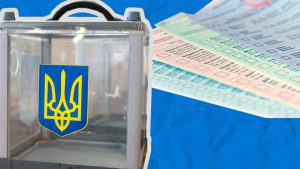
Head of Zhytomyr Regional Administration Vitaliy Bunechko reported on the ongoing work with a private investor who is seriously considering the issue of building an international airport in Zhytomyr as a public-private partnership.
“In order for the airport to work within the framework of the international airport, it is necessary to complete the construction of the runway. To complete it, we need UAH 360 million. What are we doing in this direction? A certain land plot has been transferred to the city. We are now very actively working with the private investor who is seriously considering the construction of the international airport within a public-private partnership. The idea is even to make a cargo hub here to unload Kyiv, the Zhuliany and Boryspil airports, to make a hub here to fly here and send cargo across Ukraine,” he said in an exclusive interview with Interfax-Ukraine.
Speaking about road construction, Bunechko said that since the beginning of his work as head of the regional administration in August 2019, he was skeptical about whether the Chinese contractors would be in due time with the construction of a ring road around Zhytomyr, since they violated all the deadlines.
“But the pace with which they are now making the road, and the kilometers of the road that are already there, all this gives hope and optimism,” he said.
Bunechko said that the region now has a new approach to regional roads, and not “patching up” roads.
“When I reported to the president about my first 100 days of work, I said that there would be 90 km of roads, he asked: “Are you going to build roads in 10 years?” We have a network of 7,000 km. He said that we need to look for opportunities. I want to say today it is 140 km of regional roads, which are already being repaired, despite all the obstacles that were in the antimonopoly committee. We have overcome them, we have completely tendered all our 53 highway points, all roads are being repaired. There are some roads that have already been completed, now they will be put into operation, it remains to obtain permits,” he said.
The governor said that the most critical sections of roads were selected throughout Zhytomyr region, and soon everyone will feel that the roads are being built.

The ninth container train from the Chinese city of Nanchang arrived at the Kyiv-Lisky station, the press service of Ukrzaliznytsia said on Saturday.
Three more trains from China are expected throughout September, according to the company.
Ukrzaliznytsia notes that the arriving train includes 41 containers with mineral fertilizers, light industry goods, lamps, bulbs, chemical components for water filtration and less-than-car load. In addition, the train delivered medical supplies to Ukraine, in particular, masks and other protective equipment.
The distance of transportation, which is more than 9,000 km along the territories of four countries, are covered by China trains during 15 days on average.
As reported, direct container shipments from China to Ukraine began on June 8, 2020.

The electoral process of local elections, scheduled for October 25, 2020, started in Ukraine on September 5.
Previously the Central Election Commission (CEC) of Ukraine said the start date of the campaign was adopted at a meeting of the CEC on August 30 in compliance with the requirements of the Electoral Code of Ukraine.
“At the same time, the commission took into consideration the resolution of the Verkhovna Rada of Ukraine of July 15, 2020 on appointment of the next local elections in 2020, resolution No. 160 of the CEC of August 8, 2020 on the first elections of deputies of rural, town, city councils of territorial communities and the corresponding rural, town, city heads on October 25, 2020, resolution No. 161 on the impossibility of holding the first elections of deputies of individual rural, town, city councils of Donetsk and Luhansk regions and the corresponding rural, town, city heads on October 25, 2020 and resolution No. 176 of August 14, 2020 on the appointment of the first elections of deputies of district councils for October 25, 2020,” the report says.

Prime Minister of Ukraine Denys Shmyhal has announced the inclusion of irrigation systems in the southern regions of Ukraine in the Big Construction national program in 2021.
“Next year, we have planned the construction of irrigation systems in the southern regions of Ukraine under the Big Construction program being implemented under the auspices of the President. This will be a strategic project that will dramatically expand the quality areas under crops, guarantee yields in dry months, and protect farmers from adverse weather conditions,” the prime minister said during a government meeting on Wednesday.
According to him, today begins the unification of the regulatory framework for environmentally friendly irrigation and drainage.
“This year in Ukraine, the grain harvest is predicted to be 7 million tonnes less than last year, according to forecasts of the Ministry of Economy and experts. The main reason is the negative impact of weather conditions, including drought,” Shmyhal said

Transit of natural gas through the gas transmission system (GTS) of Ukraine in January-August 2020 amounted to 34.8 billion cubic meters., which is 42% less than in the same period in 2019 (59.6 billion cubic meters).
According to the report of Gas Transmission System Operator of Ukraine LLC (GTSOU), 32.4 billion cubic meters of gas were transported in the western direction (Slovakia – 23.9 billion cubic meters, Hungary – 5.9 billion cubic meters, Poland – 2.6 billion cubic meters), which is 36% less than in January-August-2019, in the trans-Balkan region – 2.3 billion cubic meters (Moldova – 1.87 billion cubic meters, Romania – 0.46 billion cubic meters), which is 73% less than last year in this direction.
Despite a significant drop in transit compared to last year, Gazprom (Russia) fully pays for the transit capacity booked for this year (178 million cubic meters per day), which it used by 80% in January-August.
“For its part, GTSOU fulfills all daily requests and will continue ensuring uninterrupted gas transportation to European countries in the future,” the company said.

The European Bank for Reconstruction and Development (EBRD) will provide a long-term loan of up to $81 million to Kryvyi Rih Industrial Gas LLC, a Joint Venture with majority ownership by Air Products & Chemicals Inc,. a company registered in the United States, and ArcelorMittal.
The decision was made by the EBRD board on Wednesday, EBRD Senior External Relations Advisor Anton Usov has told Interfax-Ukraine.
According to a posting on the bank’s website, subject to the finalization of commercial agreements, the company will design, construct and operate an on-site air separation unit to be located in Kryvy Rih. The project will employ modern, state-of-the-art technology to safely and reliably produce industrial gases, for ArcelorMittal Kryvyi Rih steel works (Dnipropetrovsk region) and other customers in Ukraine and beyond.
The Project is expected to result in CO2 emission savings in excess of 60,000 tonnes per annum through energy efficiency gains of the steel works.
The total cost of the project is over $100 million.